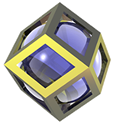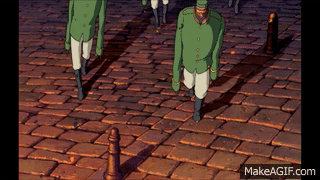
The Dixon Algebra was originally put forward as a mathematical source for the structure of the Standard Model of elementary particle physics.[1] Beyond providing an explanation for the spinor fields and gauge symmetries of the Standard Model, it also provides potential explanations for why our observable universe is dominantly matter [2], and why there are three families of quarks and leptons [3]. (A recent summary can be found here [4], and here [5].)
The Dixon algebra is constructed from the Euclidean Hurwitz algebras. These are the real numbers, R, the complex numbers, C, the quaternions, H, and the octonions, O. They are, respectively, 1, 2, 4 and 8 dimensional over R, and they are division algebras. There is a natural correspondence between these four algebras, and the four parallelizable spheres, S0, S1, S3, and S7.
In short, define
P = C⊗H.
This is the quaternion algebra with complex coefficients. DefineT = C⊗H⊗O.
This is the octonion algebra with coefficients in P. T is the Dixon Algebra, sometimes also written, R⊗C⊗H⊗O.P and T are not division algebras. Their identities can be resolved into a collection of orthogonal primitive idempotents (projection operators), 2 in the case of P, and 4 in the case of T. Because T is not alternative, care must be taken to ensure that the 4 idempotents are projectors (for example, each idempotent p must satisfy, p(pX) = pX for all X in T) [6].
Let K be any of the three division algebras, C, H, O, or any of the combinations, C⊗H, C⊗O, H⊗O, or C⊗H⊗O. Let KL be the algebra of all possible left actions of K on itself. If O is part of K, then this requires nested actions (this idea is developed in elaborate detail here). Each of these algebras, KL, is isomorphic to an associative algebra of square matrices over R, C, or H, and they each are isomorphic to ordinary Clifford algebras, and, if C is involved, then they can be also be viewed as complex Clifford algebras. In the case we view KL as an ordinary Clifford algebra for some pseudo-orthogonal norm, the algebra K plays the role of its spinor space. In this way these algebras can connect to physics. (Complex Clifford algebras can also connect to physics [3].)
For example, the algebra of 2×2 matrices over PL (denote PL(2)) is isomorphic to the Dirac algebra (the complexification of the Clifford algebra of 1,3-spacetime), which is central to theoretical descriptions of fermion particles, like the electron. Viewed in this way, PL(2)) acts on P2, the space of 2×1 matrices over P. P2 is the associated spinor space in this case, and it is where the fermion fields reside. A conventional Dirac spinor is 4×1 over C, which is 8-dimensional over R. P2 is 16-dimensional over R, and it contains a doublet of Dirac spinors. This is a benefit of using P in this context, for all the fermions in the Standard Model of elementary physics come in doublets. (These are associated with the Lie group, SU(2), played in this context by the unit elements of PR (P acting on P2 from the right).
Generalizing to the case of the Dixon algebra, T, the algebra TL(2) is isomorphic to the complexification of the Clifford algebra of 1,9-spacetime (so, 6 extra space dimensions), and it acts on the spinor space, T2. Whereas P2 provides a description of doublets of Standard Model leptons, T2 contains a full Standard Model family of leptons and quarks, and its antifamily. Fundamentally, all of this is just a simple generalization of ordinary Dirac theory.
[1]
https://www.springer.com/gp/book/9780792328902
[2]
https://cmuc.karlin.mff.cuni.cz/pdf/cmuc1403/dixong.pdf
[3]
https://link.springer.com/article/10.1007%2FJHEP10(2014)046
[4]
https://www.quantamagazine.org/the-octonion-math-that-could-underpin-physics-20180720/
[5]
https://www.wired.com/story/the-peculiar-math-that-could-underlie-the-laws-of-nature/
[6]
http://www.7stones.com/Homepage/octoIII.pdf
[Note added 2019.02.22.
The roots of the Dixon algebra, T, as a physics framework lie with earlier work by
Gürsey and Günaydin
at Yale in the 1970s, and arguably even earlier work by von Neumann and Jordan. These progenitors were focussed on making
quantum theories, and unfortunately the barriers to making realistic quantum theories founded on H and/or
O have been shown to be potentially insurmountable - at least to this point.
In all my work on T no effort has ever been made to make of it a quantum theory. It is mathematics with
a fairly obvious connection to the structure of the Standard Model. The projection operators that arise naturally from
T can be used to pick from T its components, which are akin to the components of a
matrix. The diagonal components of T are elements of C, and it is for this reason
that field theories resting on the T framework are assumed to be complex, and this applies as well
to any future efforts to apply the methods of quantum field theory to this framework.
Why then even bother to introduce these unfamiliar algebras into physics? The Standard Model does fine without them, and
QFT already rests on the field of complex numbers. What value is added?
Well, beyond the obvious - that the structure of the SM really requires some explanation - (not to mention (a linguistic
recursion - uh oh) that T-maths opens an elegant doorway to understanding matter-antimatter asymmetry),
I suggest there are deeper
analytical/field theoretical/topological reasons lying in parallelizable spheres, whose roles in all this have not been exploited.
Theoretical physics, as of this writing, is mired in its past successes, with no clear path to future successes. There
is the very real threat - heaven forfend - that it will become a branch of philosophy. I would suggest the problem is that
efforts to advance beyond the SM exploit the muscles of a bull (QFT), but the muscles are attached to the skeleton of a
squirrel (basically, P). I don't know if T is the skeleton of a bull, but it's certainly
not that of a squirrel.]


Most of my work on T = C⊗H⊗O has started from mathematics, then making obvious connections to physics. Here I'll start with physics and use accepted ideas to motivate the use of T. We start with the Dirac algebra and Dirac spinors, key elements of the Standard Model. The Dirac algebra is C(4). It is the complexification of the Clifford algebra of ordinary 1,3-spacetime. Together with spacetime differential operators, we get the Dirac operator, which acts on 4×1 column matrices over C, each component of which is a complex function of spacetime. Schematically:
This column spinor could represent an electron field, or that of its associated neutrino. These two particle fields are part of a doublet with respect to the SU(2) part of the standard symmetry. So we get a new schematic:
In this case, the 4×4 matrix on the left represents the Dirac operator; the 4×2 matrix to its right is the doublet of Dirac spinor fields, one column for the electron, and one for its neutrino; and the 2×2 matrix on the right is a element of U(1)×SU(2), represented in C(2). The electron and neutrino parts of the 4×2 spinor doublet can be projected from the doublet with the projection operators,
Without going into details, the Dirac algebra has an element, γ5, with which we
can construct other projection operators, most simply taking the forms
The point of this exercise is to highlight the fact that at this level the physics is describable in terms of a bunch of 2×2 complex matrices. This is the Pauli algebra. And it is isomorphic to
P = C⊗H.
Therefore, without any loss of information or generality, we can replace our schematic above with this:
So, to reiterate, on the left we have the Dirac algebra, now represented by 2×2 matrices over P. This acts from the left on the Dirac spinor doublet, now represented as 2×1 matrices over P. And we top it off with U(1)×SU(2) acting on the spinor doublet from the right, now represented in P alone. So,
Dirac algebra: PL(2) .
Dirac spinor doublet: P2 .
U(1)×SU(2) in PR .
And again, we can resolve the identity of PR into a pair of orthogonal idempotents (projection operators) to look at the electron and neutrino parts separately.I don't know how much more obvious the next step can be made. We have well-known and much loved physics represented using
P = C⊗H
(which is less well-known, and far less loved, but for no good reason). But it doesn't give us all the standard symmetry: it lacks SU(3). And it doesn't give us all the Dirac spinor fields we need: where are the quarks? And it doesn't use all the division algebras: it lacks O.Dirac algebra of 1,9-spacetime: TL(2) .
Dirac hyper-spinor doublet: T2 .
U(1)×SU(2) in PR .
Note! OL is the same algebra as OR, so we can leave the last line as just PR, since the OR part of TR is already in the 1,9-Dirac algebra, TL(2).
So, where's this SU(3)? Well, go read my books and papers. In short, the resolution of the identity
of T requires that we choose a direction in the imaginary part of O.
This picks out an SU(3) from G2. In addition, our spacetime implied by the enhanced Clifford algebra,
TL(2), has 6 extra space dimensions, and an associated SO(6) part of the overall SO(1,9).
The intersection of this SO(6) with G2 is the same SU(3).
The resolution of the identity of T consists of 4 orthogonal projection operators. With
these we can project from the hyper-spinor,
T2, a complete family and anti-family of Dirac spinor fields for the first
generation of leptons and quarks, and their associated anti-particle spinors. In particular, we can
project down to the individual lepton Dirac spinor parts (and to their left and right parts, if need be),
but only to the SU(3) multiplet level (triplet or anti-triplet) for the quark sector. (This same process
projects from the 1,9-Dirac operator a 1,3-Dirac operator (one for matter, one for antimatter)). Therefore, we can
project down only to those bits that have the same mass: two lepton masses, and two quark masses (each
Dirac spinor in a quark triplet - i.e., each color of a given quark type, up or down - having the same
mass). These differences in the way SU(2) and SU(3) are manifested have been shown to be related to their
differences re chirality and symmetry breaking.
And, I would suggest, it is at this point that QFT notions (complex, not quaternionic or octonionic) should be incorporated - not before.
First you build the framework, then you add the walls. But of course, this will never be done,
because humanity is ruled by NPCs. And I'm too old and tired. Just bugger off. And get off of my lawn.

